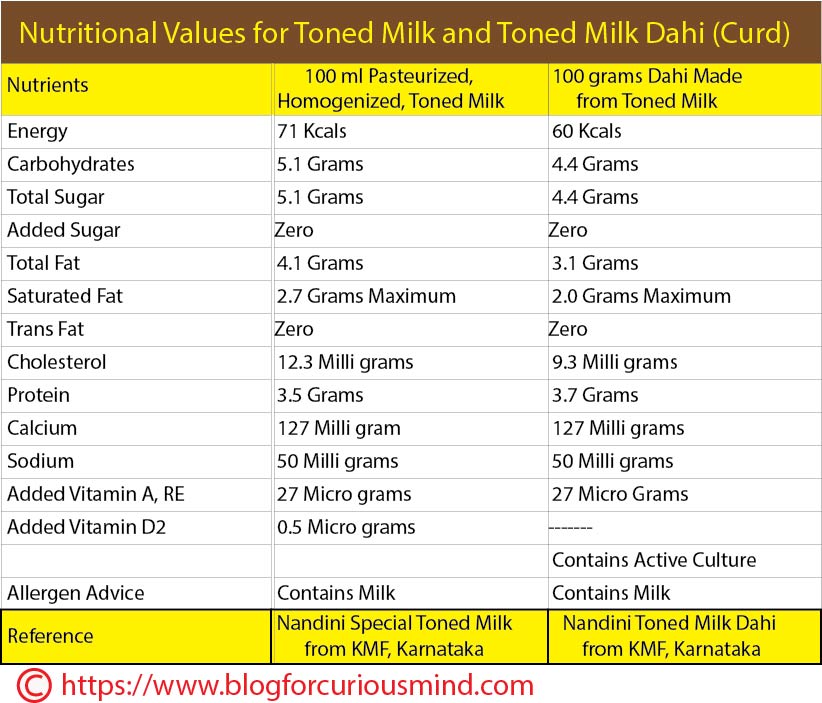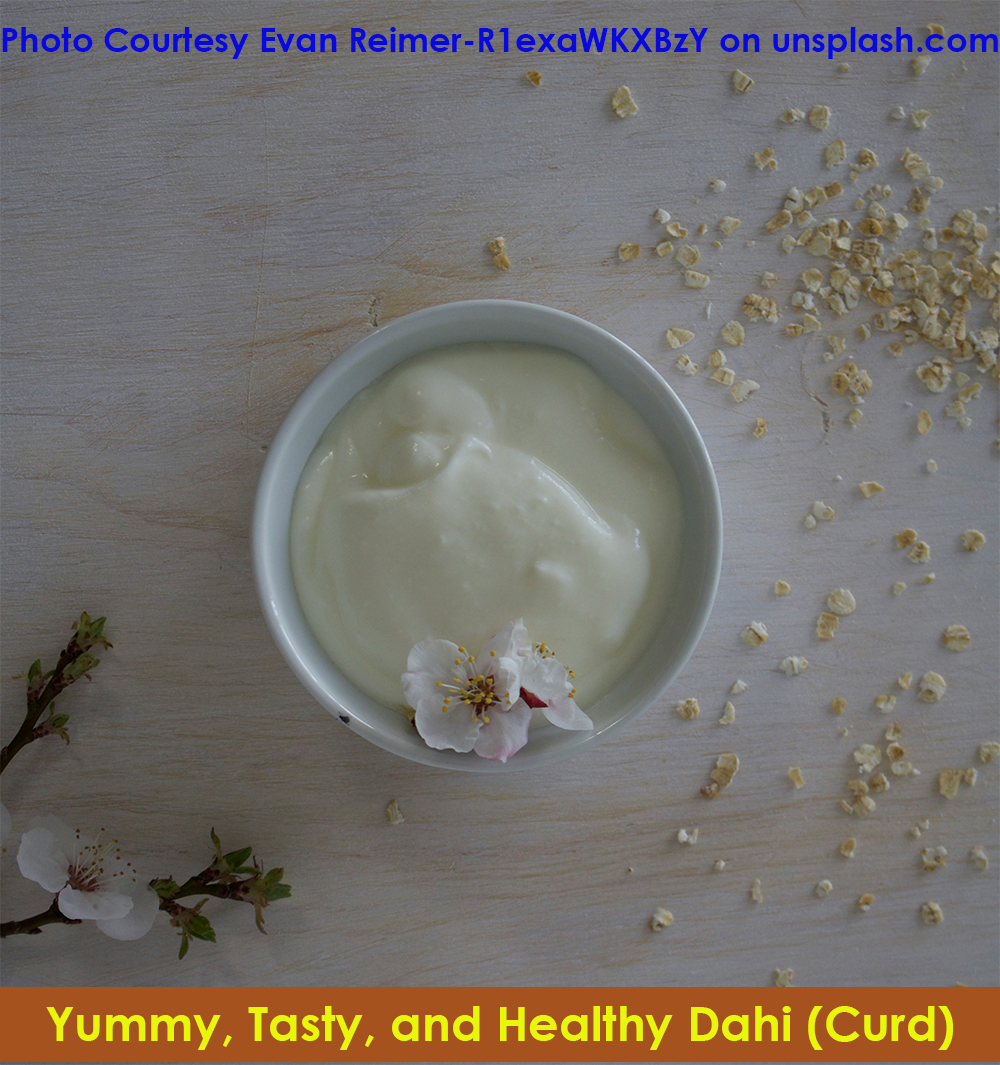Introduction
Curd or Dahi in Hindi, is a well-liked fermented milk product eaten by the majority Indians. Dahi is eaten with breakfast, as a side dish with spicy food, or as a summer beverage in the form of Lassi or Butter Milk. All milk dairies in India commercially produce and sell packed Dahi made from pasteurized milk.
Dahi has been used by Indians for more than 1000 years and is mentioned in old Ayurvedic Texts. Ayurveda recognizes Dahi for its medicinal and probiotic value. It recommends consumption of Dahi to help digestion, decrease toxins, fight diarrhea, etc.
The Dahi for direct consumption can be of the following types:
- Dahi made from whole milk
- Dahi made from toned milk
- Dahi made from no fat milk
The above Dahis have a sweet or slightly sour taste with a nice flavor or a sour taste with a severe acid flavor.
Nutrition value of Dahi/Curd
Dahi contains protein, calcium, and vitamin A which are considered important for our diet. Please see the image below for Nutritional information on Dahi compared to milk. In addition, Dahi contains an active culture, a living bacteria culture that is safe and healthy to eat.

It has been determined that products made from fermented milk, including Dahi, may have enhanced food and nutritive value compared to the milk from which they are made.
Compared to milk, Dahi is digested and absorbed more easily.
Health benefits of Dahi/curd
- Dahi contains beneficial vitamins, nutrients, proteins, and probiotics, and good bacteria. These may help improve gut health, keep your digestive system good and boost the human immune system.
- Consumption of Dahi gives fullness, decreases calorie intake, and may aid weight management.
- Dahi or curd has a pleasant taste and people who do not like to drink milk may readily consume curd.
- Dahi appears to exert a possible healing or beneficial value for the stomach and during intestinal disorders.
- Dahi contains many essential vitamins and nutrients including calcium to help make your teeth and bones stronger.
You can consume dahi in the form of Dahi Raita a popular side dish that goes superbly with pulao and biryanis, and rice items. Dahi vada is a popular snack and street food. Lassi and buttermilk/chaas are popular summer beverages. Dahi rice/curd rice is popular in southern parts of India.
Every good thing has a negative side. Excessive eating of dahi can have some side effects including indigestion, constipation, diarrhea, and gastrointestinal problems. People with lactose intolerance and/or digestive issues must not consume Dahi without consulting their doctor.
Conclusion
Dahi or curd has become an inseparable part of Indian cuisine. We cannot imagine a day without consuming tasty Dahi. Knowing the nutrients in Dahi and its health benefits makes it further tastier. Hope this article was useful to you.
You may read the following articles:
Difference between Dahi (curd) and Yogurt
What is Yogurt and how is it made
What is Dahi/Curd and how it is made in Dairy
Popular Fermented Milk Products in India
Nutrients and Vitamins in Yogurt
Caution
Never consume Dahi made from raw milk, it can cause severe illness and even death.
If you are not a Dahi eater, consult your doctor before adding it to your diet. Dahi contains milk and it is not suitable for people allergic to milk or have lactose intolerance.
References

